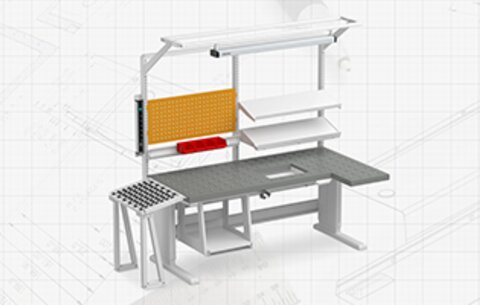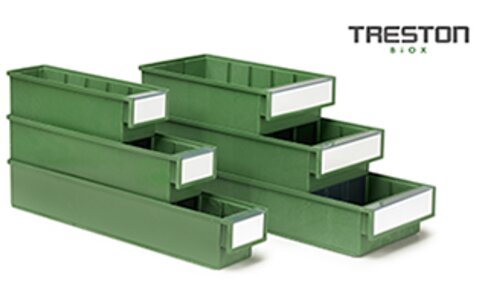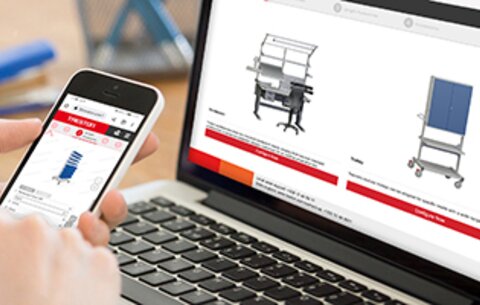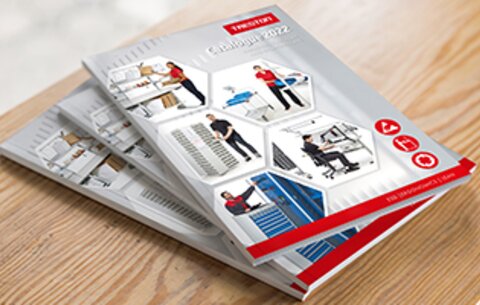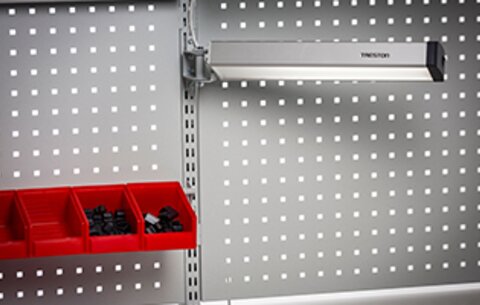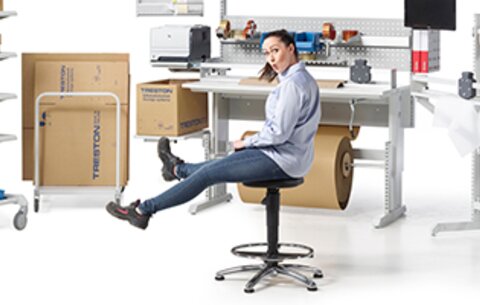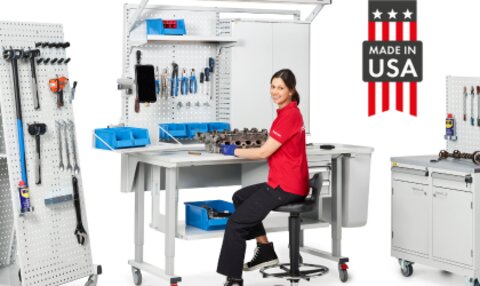

In larger facilities custom-made, modular workstations are often the missing piece of the puzzle
Discover how versatile workstations adapt to diverse tasks, enhance ergonomic comfort, and fill the gaps where fixed solutions fall short, ultimately improving operational efficiency in larger facilities.
The evolution of workstations in various larger facilities
Over the years, workstations in larger facilities have undergone significant changes. The days of rigid, inflexible workstations are long gone. Today, operators across industries are seeking adaptable and customizable workstation solutions that can adapt to their specific needs. These solutions can transform the facility floor and enhance overall efficiency.
Thierry Peron, Treston France sales director, has a long history of providing modular, customizable workstation solutions.
“It's remarkable how the demands for workstations in larger facilities have evolved. In the past, workstations were seen as static fixtures, with little consideration for the unique requirements of different industries and tasks. But now, we are witnessing a shift towards highly adaptable and customizable solutions,” Thierry explains.
Ergonomic workstation excellence in large facilities
"Ergonomics is vital for worker comfort and productivity across all facility types. Modular workstations can be adjusted to achieve the optimal height and angle for various tasks, reducing fatigue and boosting efficiency," explains Thierry Peron. He emphasizes, "We are in an era where optimizing workflows and ensuring ergonomic workspaces are paramount. Workstations need to evolve to meet these demands effectively."
Thierry further underscores the significance of ergonomics, stating, "Ergonomics should always be a top priority. Ensuring that workstations are not only efficient but also comfortable and safe is essential. It's about caring for the well-being of the workforce." He adds, "Sustaining a dedicated workforce has grown increasingly demanding in today's highly competitive job market, underscoring the expectations of younger generations."
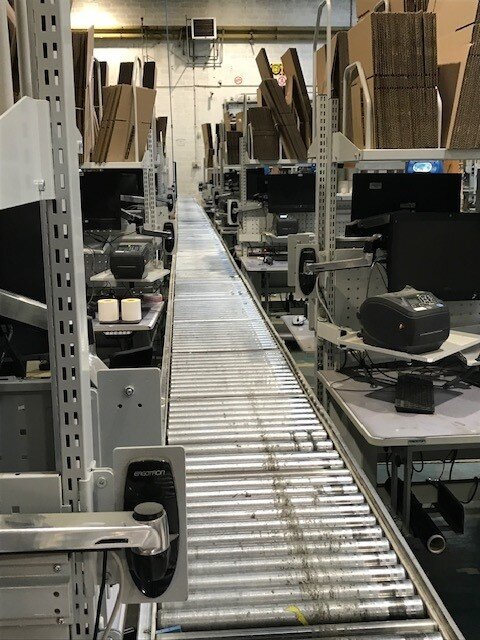
Adaptability, modularity, and scalability in diverse environments
Modularity and customization play crucial roles in the quest for greater efficiency across diverse larger facilities. Thierry Peron can see the value in adaptable solutions too: "The power of modularity in workstation design is immense. It's about creating a workspace that flexes and adapts to the needs of the workforce and the evolving demands of the industry.”
As facilities expand and evolve, modular workstations can grow with them. Additional modules and accessories can be integrated into existing workstations, ensuring they remain in sync with changing operational needs. With the right approach, facilities can harness the power of custom-made and modular workstations to enhance efficiency and stay competitive across a range of industries.
In larger facilities custom-made, modular workstation solutions are often the missing piece of the puzzle.
Thierry Peron, Treston France Sales Director

Adapting Workstations for Dynamic Needs
Let's consider a scenario where a workspace initially serves for packaging tasks. In this setting, we meticulously organize the workstation, optimizing it with dedicated areas for various materials such as cardboard rolls, tapes, and a printers. This thoughtful design ensures the seamless flow of work.
What truly exemplifies the prowess of workstation modularity is the ease with which we can transition this same workspace into an assembly station seamlessly integrated into a conveyor line. By simply swapping out the equipment and adjusting the workstation configuration, we can swiftly adapt to this new task.
“Adaptability and flexibility in workspace design enable companies to efficiently respond to changing operational requirements, ultimately enhancing productivity and workflow efficiency.” Thierry sums up.
Creating Complete Workstation Solutions
Efficiency in larger facilities isn't just about individual workstations. It's about creating a cohesive and effective working environment. To achieve this, consider the following elements:
Modular workbenches:
Look for a range of workbenches tailored to various applications, whether it's assembly lines, inventory management hubs, or distribution centers.
Storage Solutions:
An organized workspace is a productive one. Invest in storage solutions like shelves, cabinets, and drawers to ensure tools, products, and materials are readily accessible across various facility types.
Accessories and Add-ons:
Enhance efficiency further with accessories and add-ons such as lighting, tool holders, monitor arms, and cable management solutions. These additions can be seamlessly integrated into modular workstations in both manufacturing and logistics environments.
Custom-Made Solutions:
In the diverse world of larger facilities, sometimes even highly modular options and accessories may not fully meet specific operational needs. Custom-made industrial furniture solutions can be tailored to suit the unique requirements of both manufacturing and logistics centers, ensuring optimal efficiency.
- Read another blog post: 4 customized workstations for in-house logistics
- Get to know Treston's customized workstation solutions
Conclusion
In the ever-evolving landscape of larger facilities, embracing customization and adaptability is not just a choice; it's a necessity. By doing so, operators in various industries can navigate the challenges, optimize their workflows, and care for the well-being of their workforce in today's competitive job market. The missing piece of the puzzle is no longer missing; it's right here, ready to revolutionize your facility's efficiency.
Are you in charge of the industrial furniture of a larger facility?

